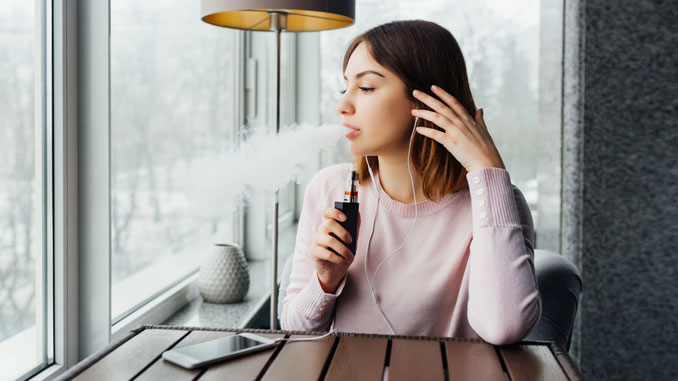
Vaping was invented in 2003 by a Chinese pharmacist and smoker who believed if he could simulate smoking, it would help him cut back on his three packs of cigarettes a day. He hoped to lessen the risk of dying from lung cancer like his father. And while he succeeded in creating the e-cigarette he imagined, it didn’t help him stop smoking; instead, it just provided a second addictive and habit-forming source of nicotine. Now, he smokes and vapes.
Some people still see vaping as a useful tool to quit smoking. Others fear it acts as a “gateway” to smoking, temping teens and young adults who otherwise wouldn’t have started smoking. So, do the pros outweigh the cons? Or are we going to look back on vaping 100 years from now and see it as the next smoking epidemic?
Pros:
- Several studies back claims that vaping helps people stop smoking: according to one study, cigarettes smokers who picked up vaping were 67% more likely to quit smoking. A different study found that e-cigarettes are twice as effective at getting people to quit smoking as traditional nicotine replacements like a patch or gum.
- You are in control of your smoking experience – choose your nicotine intake, output of vapor, and flavor.
- E-cigarettes have been estimated to be as much as 95 percent less harmful to your health than traditional cigarettes.
Cons:
- Vaping has skyrocketed among teens and young adults, doubling between 2013 and 2020 and introducing many to smoking when they wouldn’t have otherwise been tempted to try cigarettes.
- A poor understanding of nicotine dosage can lead people to inhale higher doses than what is found in cigarettes.
- Experts point a finger at flavored vaping products that target young adults.
- Vaping has been linked to short-term risks like depression, addiction, and gingivitis. Since vaping is still relatively new, long-term risk are largely unknown, but studies show a 71 percent increased risk of stroke and 40 percent higher risk of heart disease, as compared to nonusers. One chemical (diacetyl) found in flavored vaping products causes bronchiolitis obliterans – more commonly referred to as “popcorn lung,” leading to severe symptoms similar to COPD.
So, do the pros outweigh the cons? The answer depends, in part, on whether you’re already a smoker when vaping can be a healthier alternative but poses a huge risk to people who otherwise wouldn’t smoke.

